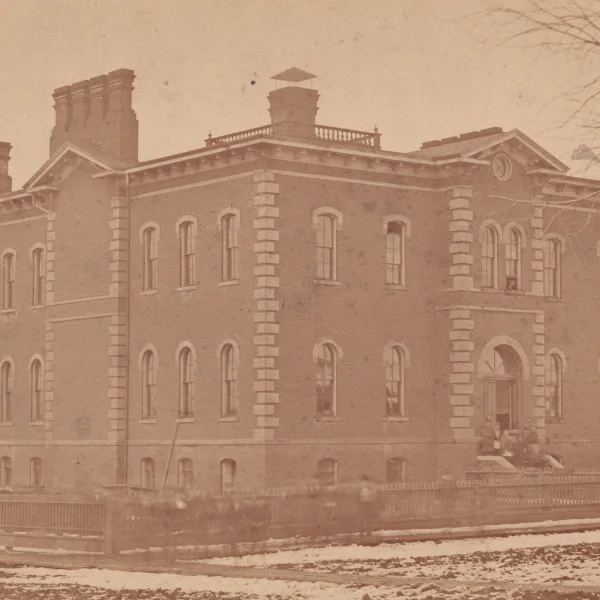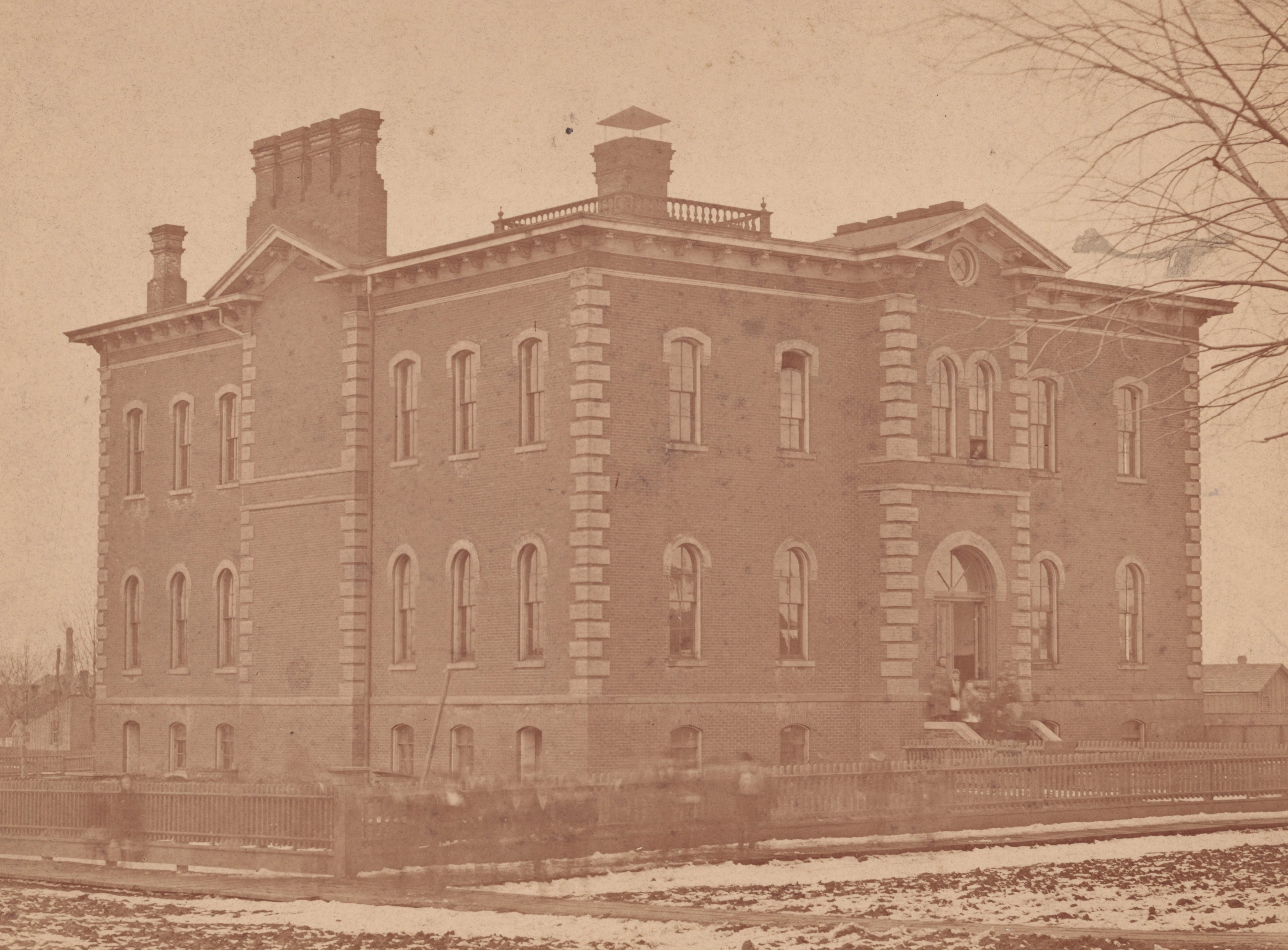Although racially segregated schools are associated with the “Jim Crow” Deep South and the Civil Rights Movement, northern communities such as Bloomington also maintained officially recognized separate schools for black and white children.
In fact, Bloomington’s all-white school board and white city leaders only belatedly and hesitantly ended the city’s racially segregated public school system when pressured to do so in the early 1870s by brave African-American schoolchildren and their supporters.
According to available evidence, the first public school in Bloomington for black children opened in 1860. The school was located somewhere on South Madison Street, and its first teacher was a “Mrs. Howard,” said to be a missionary back from Burma. The Rev. P.H. Ward of the African Methodist Episcopal Church in Bloomington played a leading role in the fundraising effort for the “Colored School,” as it was known. “He reports success, in subscriptions and donations among white folks, to the amount of near $100, which he hopes to greatly increase,” noted the Jan. 9, 1860 Pantagraph after the good reverend visited the newspaper’s offices “in supplication for aid.”
Although the state provided no funds for the instruction of African-American children (the landmark 1855 Common School Act of Illinois provided for the education of whites only), Bloomington’s colored school receive a share—albeit a very small and grossly unequal one—of local property taxes.
When it came to integrating its schools, Bloomington lagged behind Normal, which in 1867 rallied behind the admission of a black girl to the Normal University model school.
Bloomington’s colored school operated as quasi-public institution, so in addition to receiving local tax dollars, the black community raised supplementary funds to keep the austere wood-frame schoolhouse open. In the summer of 1862, for instance, the school held a charity program at Phoenix Hall on the south side of the courthouse square. The Pantagraph managed to be both complimentary and condescending to the school’s black students, noting that “in the performance of their various exercises, consisting of music, dialogues and declamations, as well as in manners, we could see but little difference between them and a school of ‘white folks’ of the same grade.”
After the Civil War, the Bloomington Board of Education dragged its heels and straddled the fence when it came to desegregating its schools. There was no such heel dragging or fence straddling, however, when it came to the city’s frustrated and abused black community. At the Sept. 26, 1870 meeting of the school board, a “committee of colored citizens” requested that the directors “discontinue” the Colored School and admit children to neighborhood and grade-appropriate schools “without distinction of color.”
One week later, at a special school board meeting, directors approved a resolution supporting the right of academically adept black students to enroll in white city schools, including the high school. Furthermore, on a motion of board member J.A. Jackman, “it was voted to allow colored children living in extreme parts of the city and unable to attend the colored school on account of distance to enter the school of the ward in which they live providing there are vacant seats and that the [school principals] have discretionary power to admit such pupils.”
Although the board fell far short of advocating full and immediate integration, its actions were still met with howls of disapproval. One detractor, identified only as “A Citizen” in the Oct. 19, 1870 Pantagraph, claimed that white children held a “natural repugnance” to racially integrated schools. Black children, “A Citizen” continued, “necessarily feel humiliated and mortified in the presence of white children who refuse to accept them on equal terms of social intercourse.”
Three months after “A Citizen’s” open letter, during the second week of January 1871, The Pantagraph reported on the “considerable excitement” caused when an unknown number of black children attempted to enroll at the Sixth Ward School over a period of several days (which was serving as temporary quarters for Fifth Ward pupils while their new school was being built).
“The [colored] children continued to press their claims from time to time with a degree of firmness unusual to the race, but so far have been unable to gain admission; but on the other hand have been somewhat violently thrust from the [school]house by a special policeman,” reported the Jan. 12, 1871 Pantagraph. “The probability is that the difficulty will lead to a legal investigation of the matter, with a view of ascertaining whether colored citizens yet ‘have rights that white men are bound to respect.’”
Indeed, those supporting the “sit in” demonstration staged by the bold black schoolchildren entered suit against the Board of Education. In addition, indictments were filed against Samuel M. Etter, city schools superintendent, and David K. Plumley, indentified as the “special policeman” who forcibly removed the black students from the school. It appears both indictments were dropped, but the case ended up in the Court of Chancery. Judge Thomas F. Tipton ruled that the Board of Education had the “right to say that the colored children shall occupy a separate building, and the only remedy for the people is to defeat the Board at the polls, and not rely upon the courts.”
Yet the protests and the legal challenges helped deliver a grievous blow to the status quo of segregated schools. According to longtime city school superintendant Sarah Raymond, when she became principal of the new Fifth Ward (or No. 5) School at its opening in early 1872, it became the first in the city “to admit colored children with white children.”
Even so, the Colored School remained open another two years. At the Dec. 29, 1873 meeting of the school board, the directors backed the dissolution of the school and the distribution of its pupils “to their respective wards as soon as convenient room can be found.”
In 1882, the Illinois Supreme Court ruled that the state constitution and a subsequent state act prohibited the establishment and maintenance of separate black and white school districts. Yet officially segregated schools survived in Illinois well into the 20th century. Shocking though it may seem, as late as 1949, some 10,000 black children in southern Illinois attended all-black schools in officially segregated districts.
Although Bloomington’s public schools were integrated by the 1874-1875 school year, District 87 did not hire its first African-American teachers until the 1960s.

